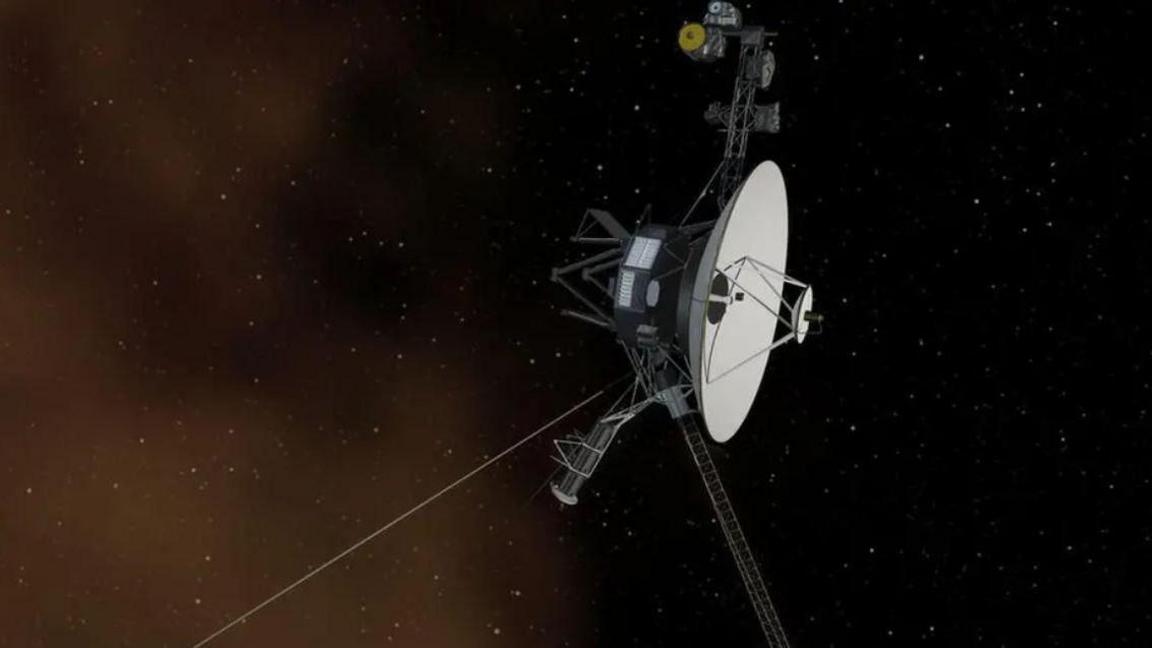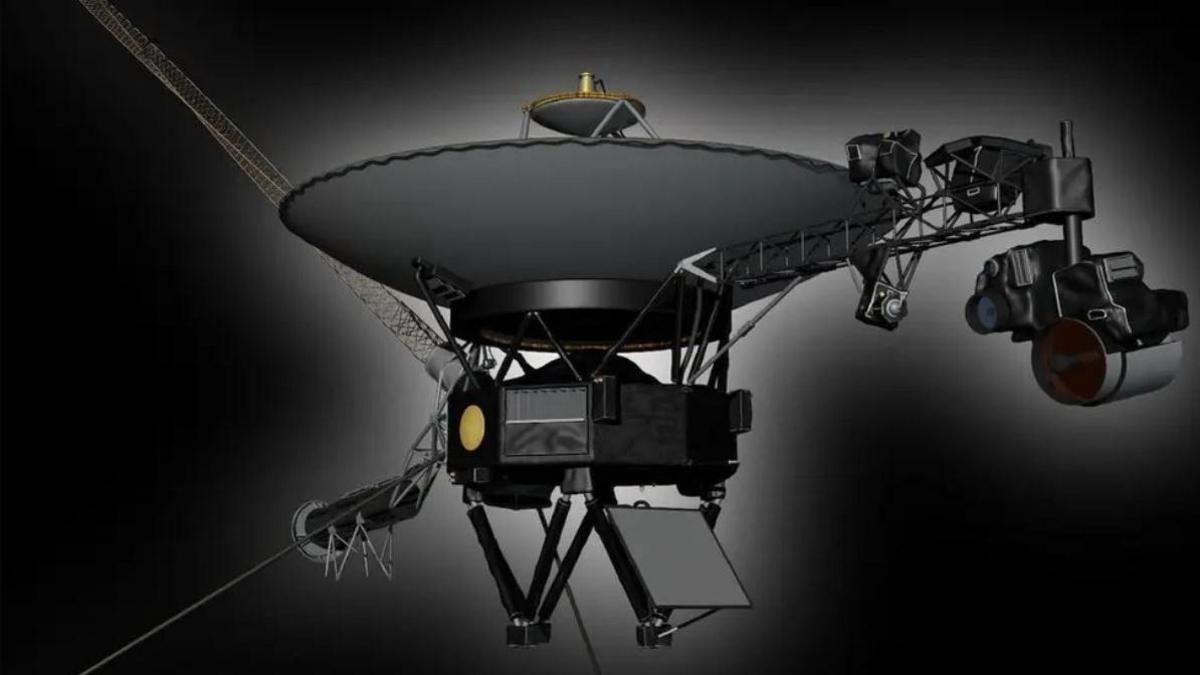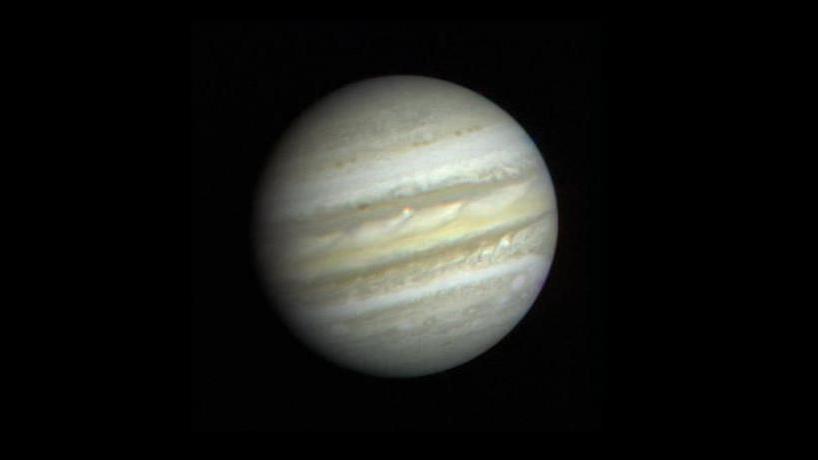Nasa says Voyager 1 spacecraft working normally again

- Published
Nasa says its Voyager 1 spacecraft, the farthest human-made object in space, is working normally again.
It comes after the US Space Agency revealed in October they were having issues with the craft and had suffered a "brief pause in communications."
After a few days, Nasa was able to reconnect with it - but they had to use a piece of equipment on board the ageing spacecraft which used a weaker signal.
However, they have now announced that things are back to normal and that Voyager 1 has "resumed regular operations".
More space news
Earth's mini 'second moon' is disappearing into space
- Published26 November 2024
Scientists find evidence of erupting space volcanoes on the Moon
- Published18 November 2024
The 'googly eye' spotted in space
- Published5 November 2024
What happened to Voyager 1?

The Voyager 1 probe was launched from Earth in 1977
Launched in 1977, Voyager 1 is on a mission to go as far away from the solar system as possible, sending back messages about what it is finding.
Because of its incredible distance from Earth, Nasa occasionally loses touch with Voyager 1 as it moves further and further away from our planet.
In October, the US Space Agency said its flight team had sent a command to the craft for it to turn on one of its heaters.
However, a few days later communication appeared to completely stop.
"The spacecraft typically communicates with Earth using what’s called an X-band radio transmitter," the space agency explained.
Nasa suspected that the craft might have turned off its X-band transmitter and decided to switch to a second radio transmitter called the S-band to try and make contact with Voyager 1.
Scientists weren't sure whether this plan would work, as Voyager 1 had not used it to communicate with Earth since 1981 - and the S-band transmits with a weaker signal.
However, it did - and they were able to reconnect with the ageing craft.
But, due to the spacecraft’s distance from Earth (about 15.4 billion miles) the switch prevented Nasa from downloading science data and information about the spacecraft’s engineering status.
Nasa says its experts have been able to solve the issue and Voyager 1 is using its X-band transmitter again.
As a result, the mission team are able to carry on collecting data from the four operating science instruments on board the craft.
Top Voyager 1 facts

This picture was the first close-up view of Jupiter from Voyager 1
Voyager 1 was launched in 1977 and was originally sent to fly past Saturn and Jupiter.
It was only supposed to last five years but has survived for nearly 50 and is still functional, collecting data for scientists.
In 2012, it made history as the first human-made object to leave our solar system and cross into interstellar space.
The spacecraft is currently more than 15,000,000,000 miles away from Earth!
In fact, it's so far away, that it currently takes nearly 23 hours for radio signals from Earth to reach Voyager 1.
Voyager 1 has its own time capsule - a gold record on board - which contains samples of music, photographs and human speech.
It was put on the craft in case any alien life form was ever to come across the probe.
